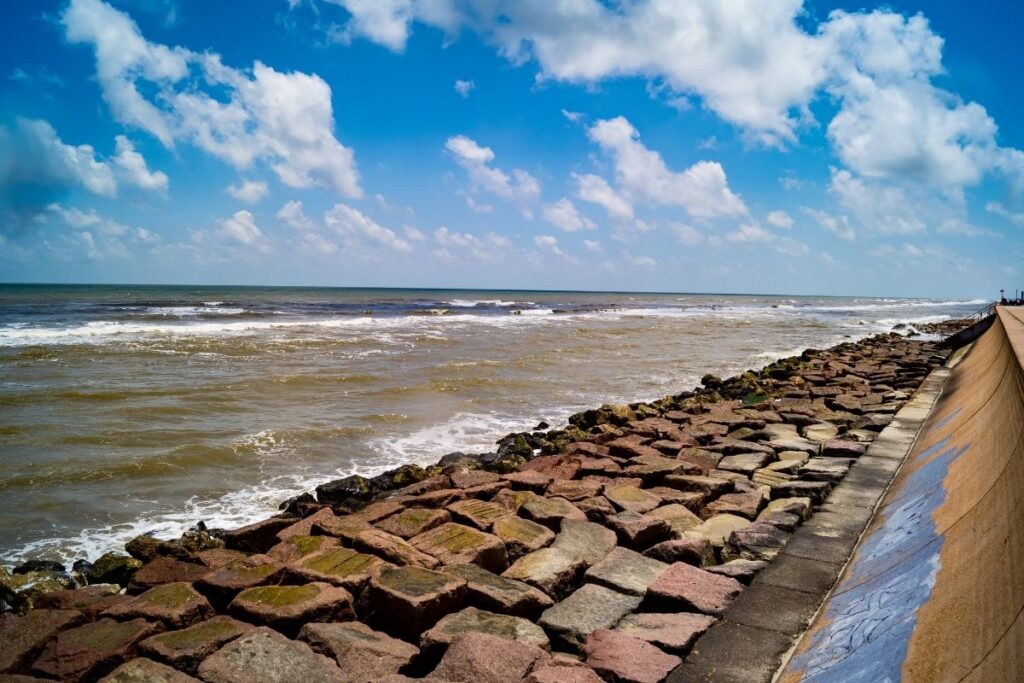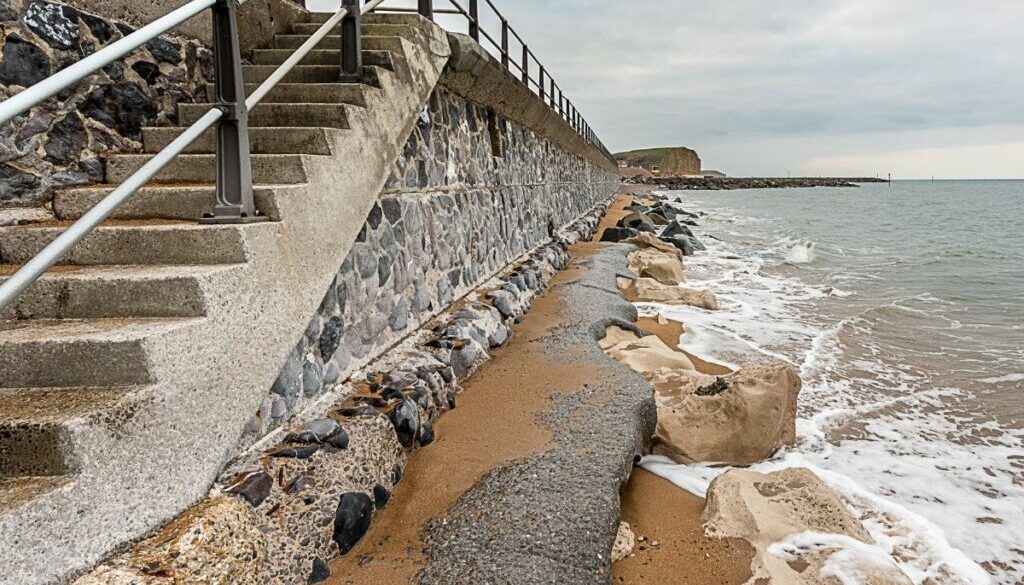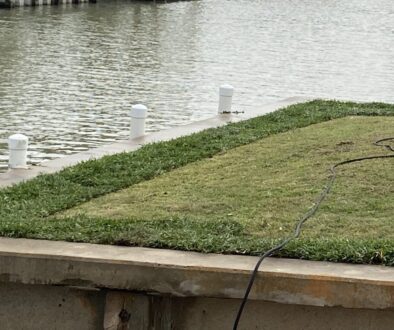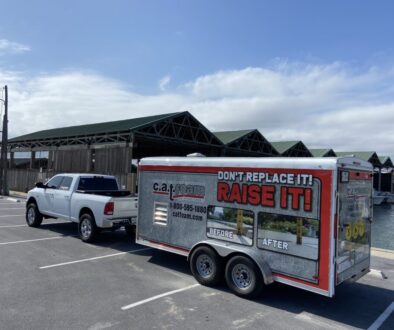The coastal erosion problem is not new. Coastal erosion has been a problem for centuries, and there are many different reasons why it happens. For instance, the sea level can change because of climate change or shifts in global tectonic plates.
But even if we can’t see any obvious cause, you should still be concerned about your property. Water erosion can cause damage to your home and make you feel unsafe. However, this isn’t the only reason why you should pay attention to any erosion problems. Many people have set up seawalls to protect their property from water erosion.
People who have seawalls protecting their coastal properties need to make sure to watch out for damage and considering getting their seawall repaired. Depending on the circumstances, a seawall that requires repair can be very dangerous for anyone living or working on the property.
What are the three types of seawalls?
Vertical Seawalls
These walls are one of the most common ways to fight high-powered waves. Vertical seawalls are similar to fences and are constructed out of either concrete or steel. These walls are easy to design, but they wear down quickly. Usually, you’ll find vertical seawalls where there are calm waters, so they don’t have to be repaired as often.
Curved Seawalls
These seawalls aren’t as tall as vertical seawalls are, but they offer a smooth slope that’s hard for waves to climb over. You may have seen curved seawalls before as steps leading into the water. Curved seawalls reduce turbulence in the water and redirect waves. These seawalls protect against strong waves during extreme weather events like hurricanes.
Mound Seawalls
A mound seawall is a sloped hill with rock and concrete armor. It slows down the waves before they hit the shore but can wear away faster if exposed to too much velocity. These are not for high-energy shores or ones that need protection from extreme weather. Mound seawalls wear away faster than vertical and curved seawalls.
How many years does a seawall last?
One of the biggest concerns people have about a seawall is how long it will last. Although you can’t predict exactly how much time a seawall has, some basic guidelines can help you estimate the lifespan of your seawall.
Luckily, most maintained concrete seawalls should last for 30-50 years, but this information isn’t necessarily true for other constructions. The wear and tear on your wall will depend on several factors, including:
A seawalls thickness – A thicker wall will protect against the ocean’s waves better than one with thin armor (less than 1-inch thick). However, thicker walls also weigh more and may not be able to hold up over time if they aren’t constructed properly.
The type of material used – Seawalls can be made from steel, timber, vinyl, and aluminum. Steel and aluminum are the most durable, but they also cost more than lumber. Wood is affordable, but it wears down quickly when facing rough waves. Vinyl and timber have relatively low costs, but they wear out after a few years of use.
Exposure to waves – Waves that continually hit a wall over time can adversely affect its durability. For example, if one side of the seawall is exposed more than others, it starts developing weak spots that can cause the entire structure to crumble after years of abuse from heavy waves pounding against it.
How to tell if you need your seawall repaired?
After your seawall has been exposed to natural elements for a long period of time, signs of wear and tear are bound to appear. If you notice your wall starting to crack or large chunks of the wall falling away, this means that it is time for repair. Visible rust can also be another sign, as well as bowing or misaligned slabs of your seawall.
Sometimes, you can’t see any cracks or signs of fractures on your wall. Unfortunately, that doesn’t mean it’s not in trouble. Other things can point to seawall problems like sunken piles or loose concrete slabs. If you notice anything out of the ordinary, it should be addressed immediately to prevent any further damage from occurring.
A seawall should be viewed as a long-term investment that needs to be maintained regularly in order to last. Nevertheless, even properly maintained walls will need some occasional repairs. With this information in mind, take a closer look at your property and start inspecting how well the seawall is holding up against erosion and storm damage over time.
Professional Seawall Repair
A seawall in need of professional repair is tough to address on your own. Affordable and trusted, our specialists at CatFoam can be up close and personal with any seawall repair problem. CatFoam is proud to serve the Houston area and offer seawall repairs for anyone in need from Houston to Galveston. Our team can help waterfront properties, and commercial properties protect against soil and water erosion.
Our seawall repair experts will analyze your property and help you determine the best course of action for seawall replacement or repair. We want to keep your property safe and make sure your seawall is functioning as intended. If you see signs of seawall failure, feel free to contact us today.




